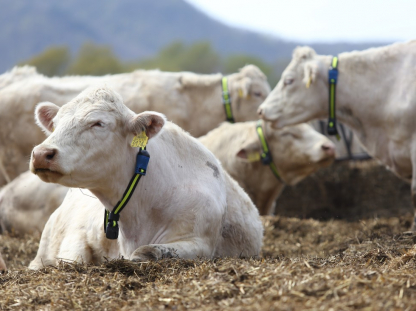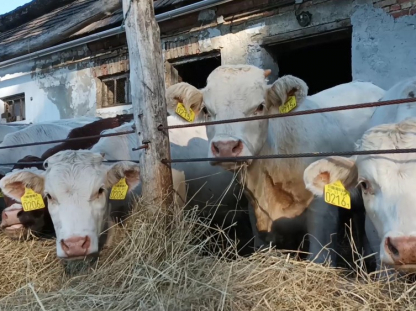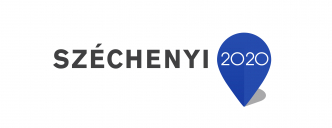Smart Animal Husbandry - Making the invisible visible
One of our newest and important fields of research is the collection of sensory and regular measurement data in the field of animal husbandry, regarding the physiological conditions, movement and weight gain of grazed beef cattle as measured by non-invasive (zero-impact) sensors.
Based on the measured data, we enable the optimization of husbandry technology, management and feeding, effective detection of diseases and malconditions (e.g. lameness, oestrus) and, consequently, the application of individually tailored veterinary procedures, taking into account the biological needs of the animals, during the grazing period as well.
With this in mind we set up our experiment, which includes two sub-sections. Our camera-sensory experiment (RumiWatch observation) was set up in the finishing barn at the end of March 2021, while our experiment on free-range, grazed beef cattle (sensory observation) was set up in early April with the participation of Gazdatrend Kft. in the village of Várvölgy.
During the RumiWatch observation, we analyze the data of high-precision sensors, with the help of four continuous video recordings made with four cameras – two in the barn and two in the runway – in order to identify as many specific sensor patterns as possible concerning the animals' behavior and activities. Following our plans, a total of five stable-fattened young bulls are participating in the research. Once enough data has been received on the movement of that individual (approximately 8 weeks), the devices are transferred to another animal. The following sensors were included in the experiment: a Rumiwatch halter-mounted head sensor with components measuring activity and temperature, and a RumiWatch leg-mounted GPS activity meter.
The evaluation of the video recordings and the Rumiwatch sensor data is conducted with a supervised learning process, with the help of artificial intelligence software in cooperation with CollMot Robotics Kft., during which we are interested in what comfort and social movements we are able to detect with a high degree of confidence using sensor data (we are currently examining 44 types of movements).
We believe that based on similar basic movement data, we can obtain more accurate and complex results regarding the health and welfare of animals, which significantly affects animals’s development, the quality of their meat, and the profitability of farming..jpg)
Sensory monitoring will be carried out from the grazing season – starting in the month of April – with commercially available sensor types that can be set up on pastures with a high degree of confidence and can be used with large herds, but which are not currently widespread in beef cattle raising. The research involved 120 cows, including some young heifers, and their offspring.
The following sensors were included in the experiment:
- Moovement GPS ear tag, position sensor (120 animals),
- Moonsyst with rumen bolus activity and temperature sensor (120 animals),
- Allflex neck transponder for monitoring the oestrus and health status of animals (on 120 animals)
- Allflex activity monitoring ear transponder for calves (designed for 100 animals),
- ENGS Pedometer foot-mounted pedometer, activity meter (120 animals),
- ENGS Pedometer, a small, foot-mounted pedometer and activity meter for calves (designed for 100 animals).
From the extensive, large quantity of data provided by the sensors, the analysis of individualized information gives an idea of the health, nutrition, welfare status, and daily rhythm of the grazed animals and the biological reproductive status of each cow. Early detection of problems and timely intervention provide an opportunity to optimize housing conditions and improve farming efficiency, even outside the barn.
With our research we want to make the invisible visible during the entire grazing period, from early spring to late autumn.
Research leader: Dr. Gábor Pajor, veterinarian, data analyst and IT specialist.
Further details of this research are available on our website:
_(2).jpg)







